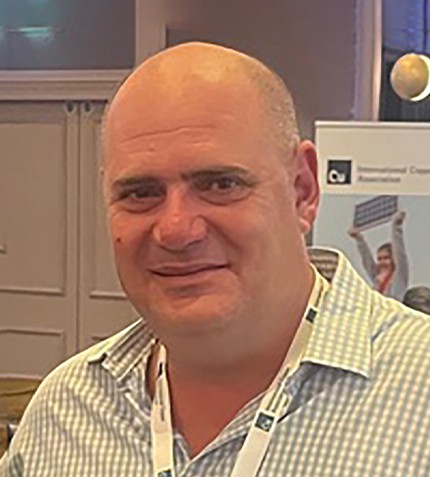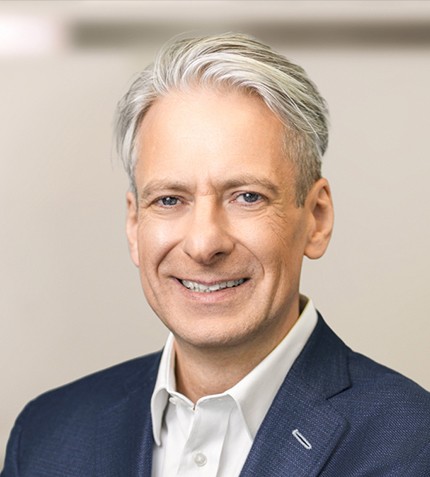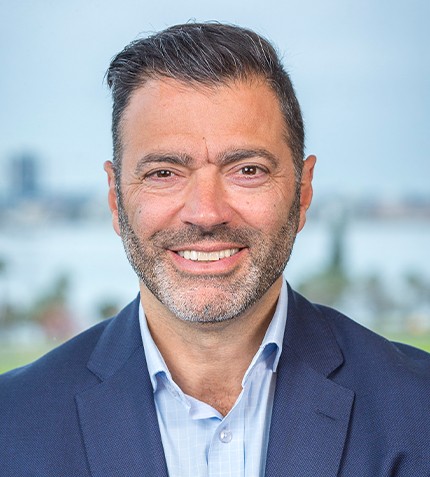
"When Lomas Bayas began operations, its projected useful life was only 12 years. Today, we are about to celebrate our 25th anniversary, demonstrating our ability to adapt to changes in the industry."
Andrés Souper
GENERAL MANAGER, GLENCORE CHILE
Could you provide an overview of Glencore’s recent operations and updates on production?
Glencore has two operations in Chile: Complejo Metalúrgico Altonorte, which is a smelter, and Compañía Minera Lomas Bayas. We also have a 44% stake in the joint venture Compañía Minera Doña Inés de Collahuasi, which is managed independently.
2022 was a year of excellent success at both Altonorte and Lomas Bayas. Altonorte broke a record, processing 1,105,482 t/y of new concentrate while complying with the environmental objectives established by the authorities regarding emissions and air quality, with a particular emphasis on carbon output.
At Lomas Bayas, the Chilean Environmental Assessment Service (SEA) approved the mine’s operational continuity project. This investment of US$254 million will extend the useful life of Lomas Bayas, allowing copper cathode production of approximately 80,000 t/y. In terms of production, Lomas Bayas produced 72,616 t/y of fine copper, and Collahuasi produced 571,000 t/y.
How are decreasing ore grades impacting Glencore?
Glencore in Chile has vast experience in low grade ore, as it has always been our focus. When Lomas Bayas began operations, its projected useful life was only 12 years. Today, we are about to celebrate our 25th anniversary, demonstrating our ability to adapt to changes in the industry by incorporating new technologies and establishing innovative projects and programs.
Our operational continuity project will allow Lomas Bayas to continue growing. This will utilize new mining resources in the leaching and supply phases of the plant from 2024 to 2029 and will enable us to utilize existing facilities throughout the useful life of the project.
How is Glencore navigating pressures on water availability?
Complejo Metalúrgico Altonorte is currently almost entirely fed with treated wastewater from the city of Antofagasta. Additionally, the foundry has developed important innovation projects to become more efficient in freshwater usage. For example, our current smelter slag cooling system seeks to reduce the consumption of water during that stage of the process.
At Lomas Bayas, we use water from the Calama basin, but we are actively developing a plan to transition to non-continental water and ceasing to use our water rights. We plan to source our water from a sewage treatment plant in Antofagasta. Last, Collahuasi has already awarded the design and construction of a desalination plant in Puerto Patache, in the Tarapacá Region, which will have an initial capacity of 1,050 liters per second.
What is your perspective on profitability for producers at the moment?
The current scenario is challenging due to a variety of factors: the fall in production (due to less activity in the national mining sector); the increase in costs; and, finally, the instability of the copper price, which has fallen a little more than 5% in the last year.
This has also been influenced by the negative impact of the taxation of the main private mining companies in the country, all in the midst of the debate on the mining royalty project, which was recently approved to become a law.
However, the world is embarking on a process of change driven by the energy transition. From this perspective, the market will continue to be attractive.
How does Glencore prioritize environmental stewardship?
We are transitioning to the use of green energy contracts. We understand that most of our demand is long term, allowing us to project the use of non-conventional renewable energies (ERNC). We are working on the efficiency of the operation and the electrification of our haulage equipment. We are beginning to use trolleys in our Chilean operations, while increasing the use of automation, which has benefits in efficiency and – as a consequence – reduction of emissions.
Aside from having Scope 1, 2, and 3 emission reduction goals, we have short-term goals: a 15% reduction in emissions by 2026 (compared to our 2019 baseline), a 50% reduction by 2035, and, finally, 100% by 2050.
Has Glencore introduced any advanced technologies?
In Chile, in Lomas Bayas, the Autonomous Trucks project is under development. The strategy considers the incorporation of equipment and technology so that the CAEX can operate autonomously, directed from control rooms, reducing exposure risk by 90%.
In the pilot stage, which begins in November 2023, four Autonomous Trucks (AHS) will be operating. Subsequently, it will be increased to 12 trucks and then, depending on the results, a total of 27 AHS will be in operation at Lomas Bayas in 2025.










